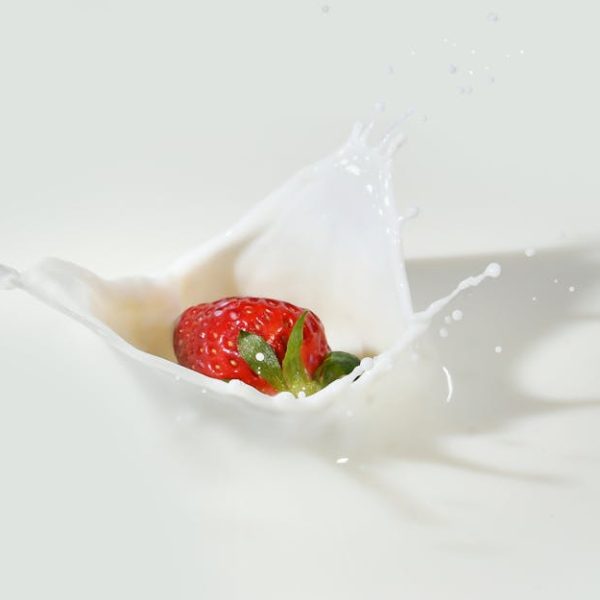Milk, a beverage that many of us enjoy daily, holds a delicate balance between freshness and spoilage. This article is designed to guide you in understanding how long milk lasts, how to identify when it’s no longer good, and the safety practices around its consumption.
Identifying Fresh and Expired Milk
The telltale freshness of milk is characterized by its creamy white color, smooth texture, and a gentle, clean smell. Straying from these signals should catch your attention, as it might indicate that your milk is past its prime.
Look out for these signs that your milk has gone bad:
- A color shift to yellow
- A sour, unpleasant smell
- Thickness or clumps, showcasing the milk starting to separate
Pro-Tip: Unsure if your milk is still good? Try the small test: pour a little into a glass and carefully assess. If it looks, smells, and tastes off, it’s time to let it go and avoid potential health risks.
Fridge Storage and Shelf-life of Milk
The cold environment of your refrigerator, ideally below 40°F (4°C), is crucial in preserving your milk’s freshness. Once opened, the countdown begins – typically, milk should be consumed within six days of opening for the best quality and safety.
Here are some further practices ensuring optimal milk storage:
- Always keep the milk container tightly covered.
- Try to store at the back part of the fridge, which tends to be the coldest.
- Don’t leave the milk container outside the refrigerator for an extended period.
The Lifespan of Different Types of Milk in the Fridge
| Type of Milk | Shelf Life |
|---|---|
| Whole Milk | 5-7 days past the ‘sell by’ date |
| 2% Milk | 5-7 days past the ‘sell by’ date |
| Lactose-Free Milk | 7-10 days past the ‘sell by’ date |
Impact of Pasteurization on Milk’s Shelf Life
Pasteurization – the process of heat-treating milk to kill harmful bacteria – not only ensures safety but can also extend the beverage’s shelf life. This process can vary in its intensity: there’s regular pasteurization and ultra-high temperature (UHT) treatment.
The benefits of pasteurization include:
- Enhancement of milk’s safety by eliminating harmful bacteria
- Extension of the shelf life, especially in UHT milk
Some possible downsides include a slightly cooked flavor for some brands and reduced nutritional value due to high-heat processing.
Pro-Tip: If longevity is your aim, look for UHT milk, also known as ‘long-life milk’.
Proper Handling and Storage of Different Types of Milk
While the principles of milk storage remain constant – keep it cool, keep it covered – various types of milk might require different attention.
Whole and Skim Milk
Whole and skim milk are similar in their storage needs. Kept at the right temperature and securely closed, both should last for five to seven days after opening.
- Quick to chill after purchase
- Store in the back of your refrigerator
- Never leave it out for more than two hours
Condensed Milk
As condensed milk is canned and sweet, it can last up to a year unopened in the pantry. But once opened, be sure to refrigerate it in a different container and use it within two weeks.
- Store unopened cans in a dark, cool place
- Always refrigerate after opening
- Not suitable to be frozen
Powdered Milk
Powdered milk can provide all the richness of milk while being incredibly shelf-stable. Kept cool and dry, an unopened package can last for up to two years.
- Store in a cool, dark, dry place
- Refrigerate once mixed
- Use within a few days once mixed
Comparison: Fresh Milk vs Powdered Milk
| Fresh Milk | Powdered Milk | |
|---|---|---|
| Shelf Life Before Opening | Up to the ‘sell by’ date | Up to 2 years |
| Shelf Life After Opening | 5-7 days | Roughly 5 days (once mixed) |
| Storage Requirements | Always refrigerated | Dry and cool storage (refrigerated once mixed) |
Maintaining the Quality and Safety of Milk
Preserving milk’s quality and safety isn’t just a matter of practicality – it influences your health. The consumption of spoiled milk may lead to food poisoning, not an experience anyone wants.
Some practices to ensure the safe handling and consumption of milk include:
- Never drink straight from the container to avoid swallowing bacteria that could multiply in the milk.
- Keep your refrigerator properly clean and regularly check the temperature.
- Use good hygiene when handling milk; always pour with clean hands and never double-dip.
Pro-Tip: If your milk is nearing expiration and you can’t use it in time, consider using it in cooking or baking. Pancakes, creamy soups or homemade ice cream can be excellent choices.
In conclusion, keeping your milk fresh and safe to drink is not complicated, but it does require some care. Follow these tips to get the most out of your milk and enjoy it at its freshest!
Key Takeaway:
- Fresh milk has a white color, smooth texture, and a clean smell. Any deviation from this, like changes in color, unusual smells, and clumping, may indicate that the milk has expired.
- The refrigerator temperature should ideally be below 40°F (4°C) to extend milk’s shelf life. Opened milk must be consumed within six days to ensure its safety and high quality.
- The shelf-life of milk may differ depending on the type; whole and 2% milk generally last about 5-7 days past the ‘sell-by’ date, while lactose-free milk remains good for 7-10 days past the ‘sell by’ date.
- Pasteurization enhances the safety of milk by eliminating harmful bacteria and extends its shelf life.
- Storing different types of milk, such as whole, skim, condensed, and powdered milk, may require different methods to ensure their longevity.
Milk is a vital part of our households, and we rely on it daily. Its safety and quality become a priority for our own wellbeing. By taking some necessary steps, you can enjoy your refreshing glass of milk without worrying. Always remember that when it comes to food safety, it’s better to err on the side of caution.
FAQs
Q: What is the best way to store opened condensed milk?
A: Once opened, condensed milk should be transferred to a different container and should be refrigerated. It should be used within two weeks of opening.
Q: How do I handle unopened condensed milk?
A: Unopened cans of condensed milk can last up to a year in the pantry. The cans should be stored in a cool, dark place.
Q: How does pasteurization affect the flavor of milk?
A: Depending on the brand, some pasteurized milk might have a slightly cooked flavor, while others retain the natural taste of milk.
Q: Can I freeze milk to extend its shelf life?
A: Yes, you can freeze milk to extend its life. However, once thawed, it should be used within a few days and should not be refrozen.
Q: Is powdered milk a good alternative to fresh milk?
A: Yes, powdered milk is a good alternative to fresh milk, especially where refrigeration is limited or while traveling. It provides all the richness of milk and is incredibly shelf-stable.
Please do share this article to help others take care of their health better and explore more of our posts for other knowledgeable insights.






